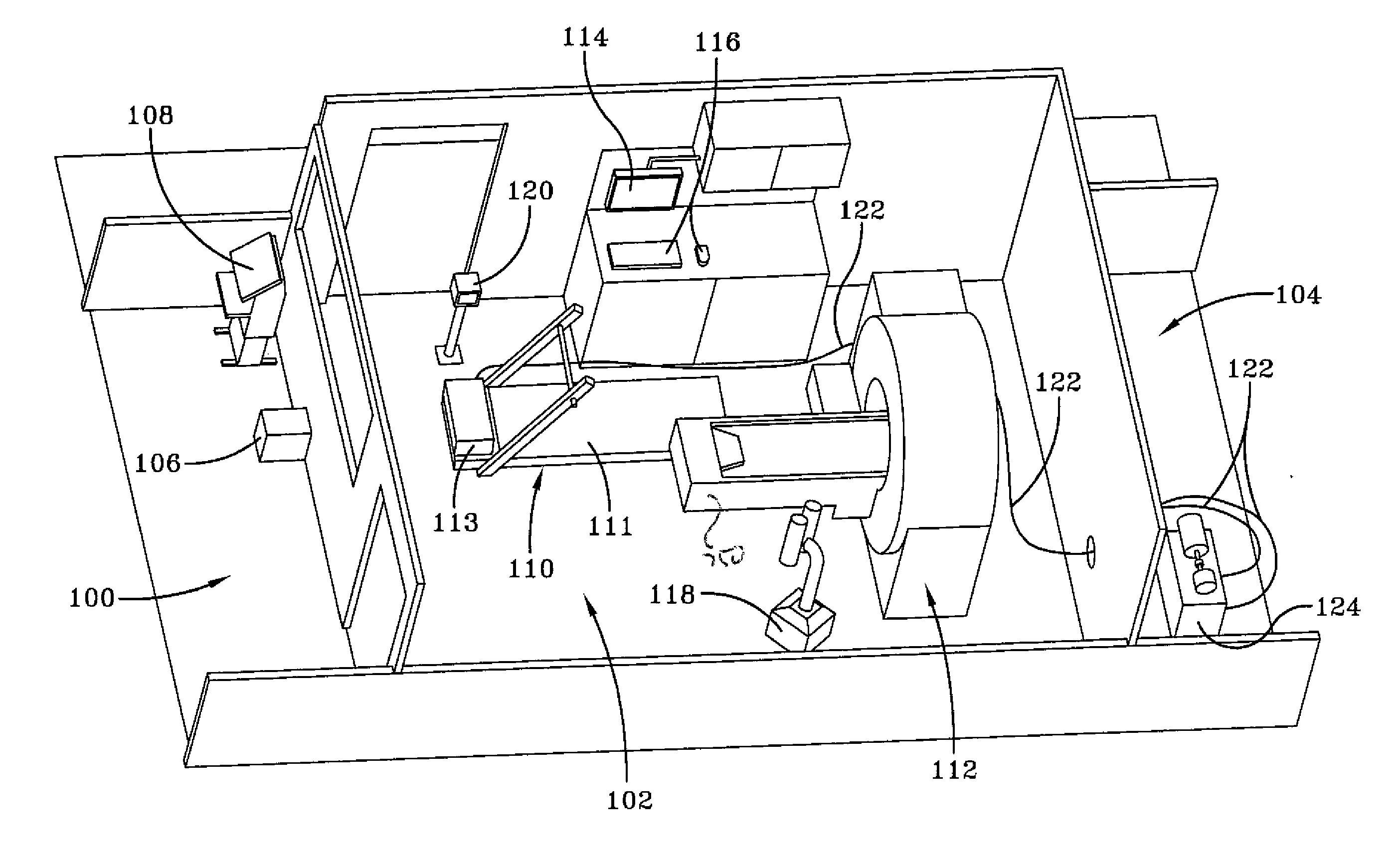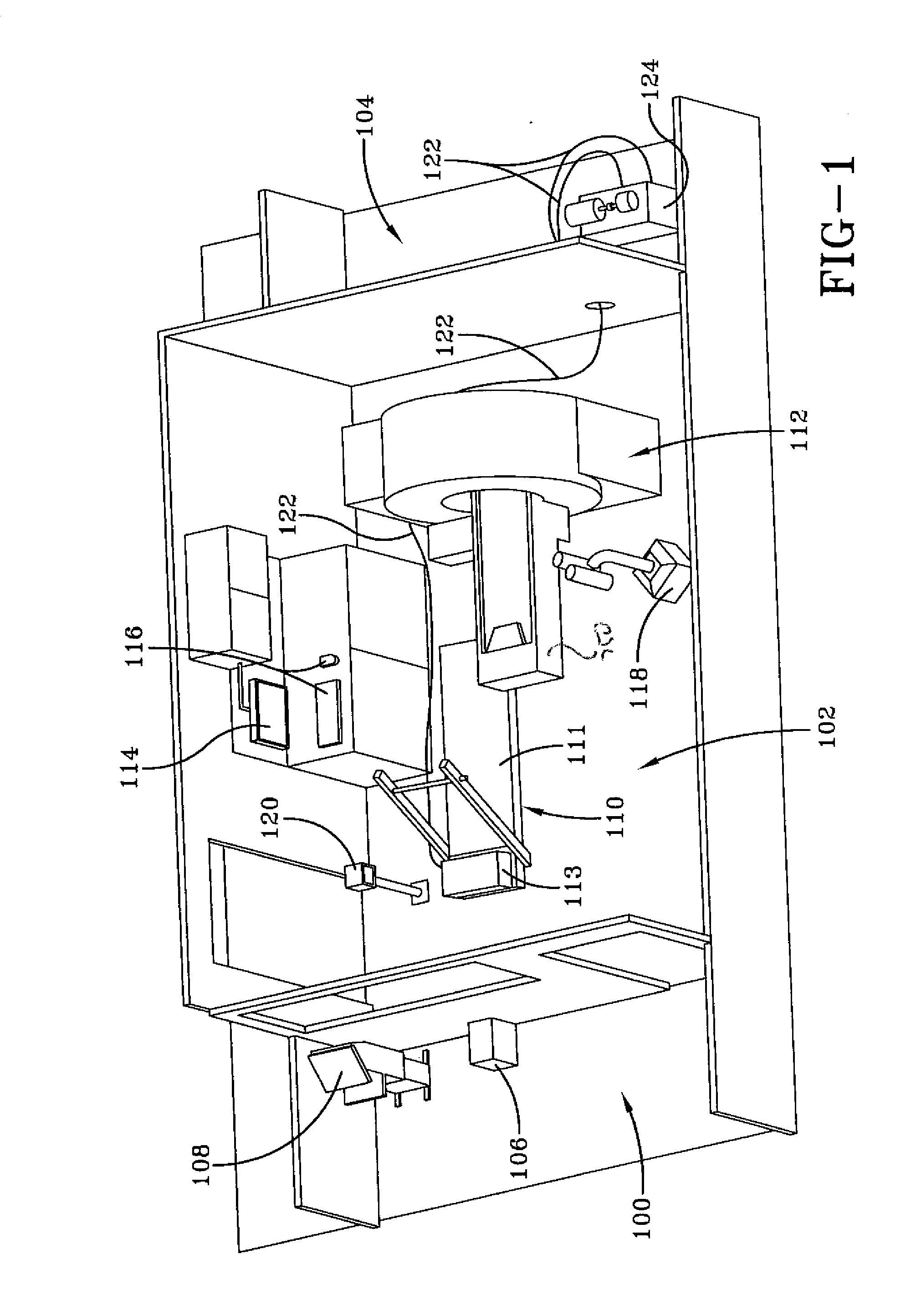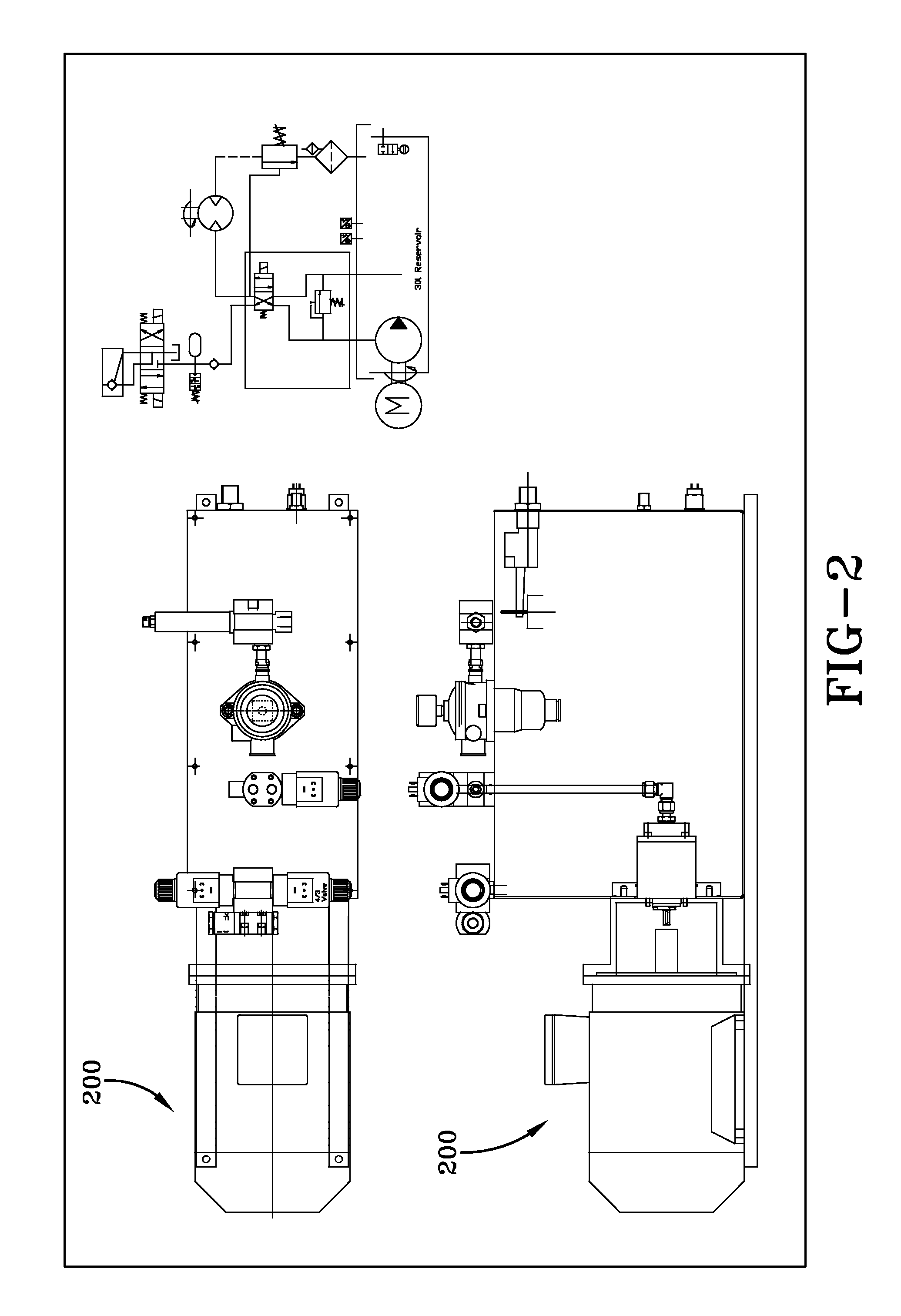System and method for cardiovascular exercise stress MRI
a stress-mri and cardiovascular exercise technology, applied in the field of cardiac stress testing, can solve the problems of patients not being able to reach peak effort, unsuitable for cardiac stress testing, unsatisfactory results, etc., and achieve the effect of short time laps
- Summary
- Abstract
- Description
- Claims
- Application Information
AI Technical Summary
Benefits of technology
Problems solved by technology
Method used
Image
Examples
Embodiment Construction
[0025]Referring to FIG. 1, an illustration of components and the configuration of components for a MR-compatible treadmill system according to an example embodiment of the present invention is shown. In this example, components of the present invention are contained in a control room 100, a scan room 102 and an equipment room 104. One or more computers 106 in the control room 100 support control and monitoring of components in the scan room 102. A treadmill control system computer may be used to communicate with the treadmill 110. Another scanner computer may be used to communicate with the MR imager 112. The scanner computer may be used to control functionaltiy of the MR imager 112 related to data acquisiton, image reconstruction, and image display and analysis.
[0026]A hydraulic powered treadmill 110 and MR imager 112 are contained in the scan room 102. The hydraulic powered treadmill 110 is connected to a hydraulic power pack 124 via hydraulic hoses 122. In FIG. 1, certain hose se...
PUM
 Login to View More
Login to View More Abstract
Description
Claims
Application Information
 Login to View More
Login to View More - R&D
- Intellectual Property
- Life Sciences
- Materials
- Tech Scout
- Unparalleled Data Quality
- Higher Quality Content
- 60% Fewer Hallucinations
Browse by: Latest US Patents, China's latest patents, Technical Efficacy Thesaurus, Application Domain, Technology Topic, Popular Technical Reports.
© 2025 PatSnap. All rights reserved.Legal|Privacy policy|Modern Slavery Act Transparency Statement|Sitemap|About US| Contact US: help@patsnap.com



